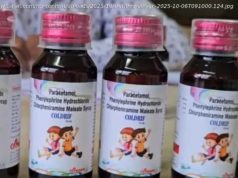A Texas woman died 21 days after being infected by a bacteria that can cause necrotizing fasciitis, or flesh-eating disease.
On October 15,2017, Jeanette LeBlanc died after fighting a gruesome bacterial infection for 21 days.
According to local news, LeBlanc and her wife Vicki Bergquist had been visiting family in Louisiana and spent the day crabbing along the coast. They purchasing a sack of raw oysters at a market, then shucked and ate them.
„About 36 hours later she started having extreme respiratory distress, had a rash on her legs and everything,“ Bergquist told KLFY, a local CBS affiliate.
LeBlanc reportedly developed „severe wounds“ on her legs, and doctors informed her that she had a bacterial infection known as vibriosis.
LeBlanc’s condition worsened for weeks before she succumbed.
There are approximately a dozen different types of Vibrio bacteria that can cause various forms of vibriosis. Most are unpleasant but resolve within a few days, but one rare type can cause a „flesh-eating“ or necrotizing fasciitis condition that kills up to 30% of those infected.
Vibriosis, flesh-eating bacteria, oysters, and brackish water
There are approximately 80,000 vibriosis infections in the US every year, according to the CDC. Estimates suggest 52,000 of those cases are likely the result of eating contaminated food, especially raw seafood. About 80% of those infections occur between May and October, when water is particularly warm — ideal for colonies of bacteria to grow and thrive.
The vast majority of vibriosis infections result in symptoms typical of a foodborne illness: cramping, diarrhea, vomiting, nausea, fever, and chills.
One specific form of Vibrio bacteria, Vibrio vulnificus, is more dangerous. This infection can cause blistering skin lesions, bloodstream infections, and necrotizing fasciitis (flesh-eating disease, which causes soft tissue to die) if a wound gets infected. But it’s very rare: CDC estimates are that there are about 205 cases in the US every year.
When treatment is possible, understanding that flesh-eating disease has been caused by Vibrio is important, since it’s treated differently from other bacteria. Other bacteria can cause flesh-eating disease as well — in fact, Vibrio bacteria are far less likely to cause these infections than group A Streptococcus bacteria and some other types. But flesh-eating disease is one of the most common signs of Vibrio vulnificus, according to one study.
Are oysters responsible?
If LeBlanc died of vibriosis, V. vulnificus would be the likely culprit. Still, it’s unclear how she was infected.
Most headlines have focused on raw oyster consumption, since people can contract the condition by eating raw seafood that’s infected with V. vulnificus .
One study conducted by the Florida state health office found the infection was the leading cause of death from foodborne illness between 1981 and 1992. During that time there were at least 72 infections, mostly caused by eating raw oysters, and 36 deaths. According to the CDC, there’s no way to know if an oyster carries bacteria like Vibrio.
But it’s also possible that wading in brackish water (a mix of salty and fresh) while crabbing could have exposed LeBlanc to the bacteria, especially if she had cuts or scrapes on her legs. Hurricane floodwaters after Harvey resulted in at least one fatality from flesh-eating bacteria and there were several Vibrio deaths after Katrina.
For people with serious vibriosis, antibiotics can treat some cases. Others result in amputations or death. People with liver conditions are much more likely to get severely ill.
The CDC and other health departments have warned that the only way to kill bacteria is to properly cook oysters. Warmer waters (which are becoming more common) make raw oysters even riskier to consume, Bill Marler, a lawyer who focuses on food poisoning cases, previously told Business Insider. That fact was enough to convince him never to eat raw shellfish.
However, cases like LeBlanc’s are exceedingly rare. Whether or not wading in partially salty water or eating raw seafood are worth the risk is an individual decision.
NOW WATCH: These are the foods a food-poisoning lawyer refuses to eat
See Also:






